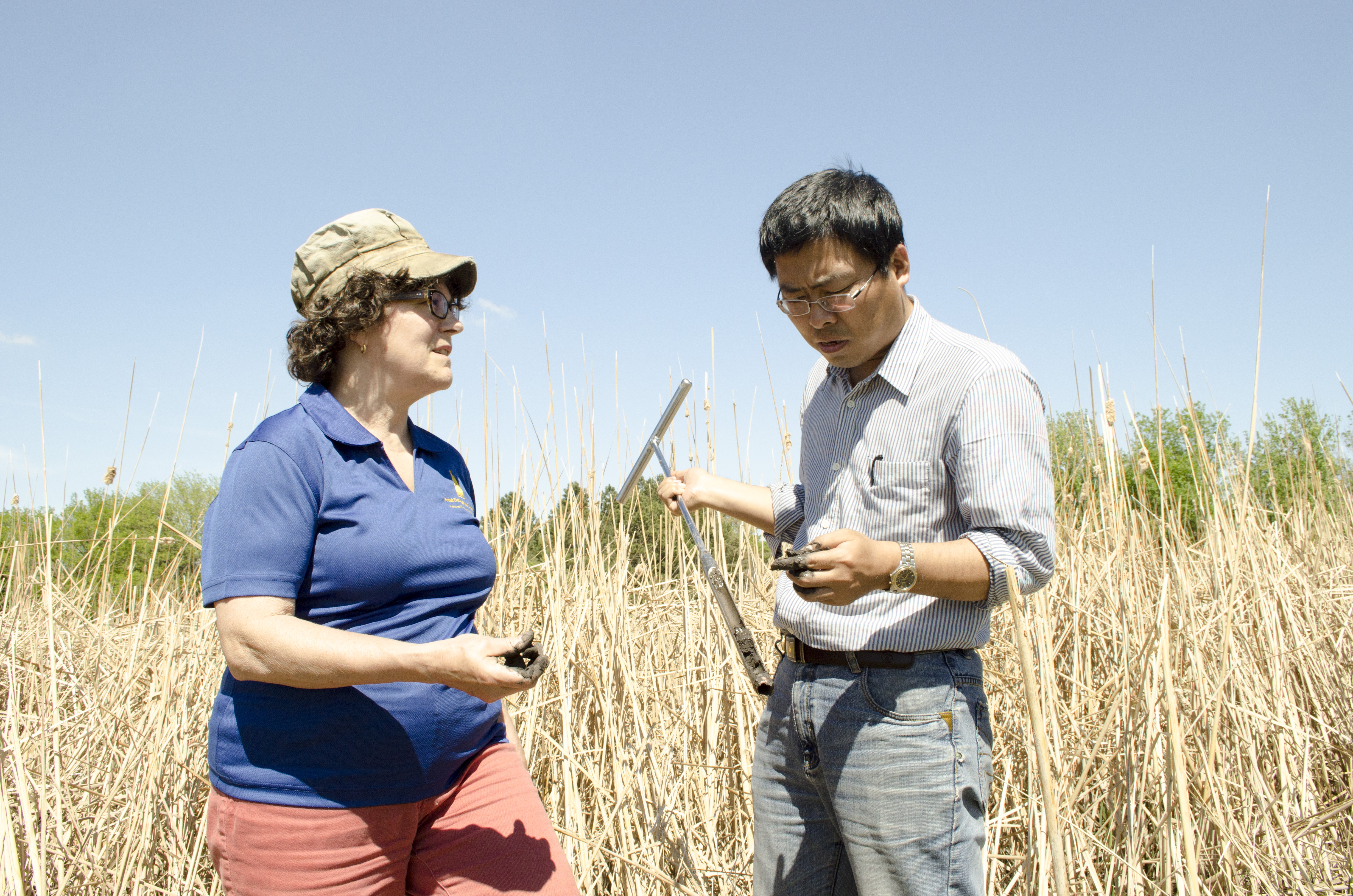
Brookings S.D. (KELO AM) - Two Chinese scientists came to Brookings to learn about grasslands and wetlands management from South Dakota State University researchers.Professor Zhenguo Niu from the Chinese Academy of Sciences worked with professor Carol Johnston of the department of natural resource management. Johnston's research earned her recognition as a fellow of the international Society of Wetland Scientists last year and the 2009 National Wetlands Award for Science Research. Niu's six-month visit, which began in December 2013, was funded through a grant from the China Scholarship Council.Associate professor Yuping Rong of the China Agricultural University arrived in May and will study grassland management with rangeland ecologist Lan Xu, an associate professor in the natural resource management department.
Rong's yearlong residency is sponsored by the China Scholarship Council.Making conservation a priorityIn the early 90s, the Chinese government became serious about protecting its remaining wetlands and grasslands. Though China had 10 percent of all the world's wetlands, one-third of those acres have been in the last 30 years, explained Niu. Most of the remaining natural wetlands are in northeastern China and the Tibetan plateau.
At the Institute of Remote Sensing and Digital Earth in Beijing, Niu uses remote sensing data, including Landsat satellite imagery, to map and evaluate progress toward preserving and restoring wetlands in China.
Working with the Beijing research team, Niu has mapped China's wetlands using data from 1978, 1990, 2000 and 2008.At SDSU, Niu learned about the state and federal agencies involved in wetlands research and various mapping techniques used to document wetlands, including a visit to U.S. Geological Survey Earth Resources Observation and Science Center—EROS, where the Landsat images he uses are stored.The South Dakota climate and landscape are much like northeastern China, Niu explained. One of the highlights of his work at SDSU was writing a chapter on China for a book on the wetlands of the world.
In 2011, the Chinese government began subsidizing livestock producers to help reverse the damage due to overgrazing, according to Rong. The grasslands have been so depleted that the "same area that once supported five sheep can now just raise one.
"Restoring grasslands requires care, so that only native species of grasses are introduced, SDSU grasslands expert Xu pointed out. In the 1930s, some species designed to combat erosion and increase forage invaded native grasslands, replacing the native species and altering the ecosystem. "What was once the solution becomes the problem," she said.
China's tropical and subtropical grasslands already have invasive species, but the drier areas, which are more like South Dakota, do not, Rong explained. She is particularly interested in Xu's research on the bud bank of perennial grasses, which is linked with their ability to withstand adverse conditions.Rong will also work with Jack Butler, research ecologist for the U.S. Department of Agriculture Forest Service Rocky Mountain Research Station in Rapid City.
"In both countries, the economic benefits of agricultural production often outweigh environmental considerations," Johnston said. Urbanization led to loss of arable land, and the pressure to produce food fueled more intensive farming practices, Rong explained.However, Niu pointed out that dealing with air pollution in major cities has made "more and more people realize the environment is important to their health." As the Chinese people enjoy greater earning power, Rong noted that they are looking outdoors to rivers, streams and parks for recreation, so are beginning to see "the value of preserving natural resources."